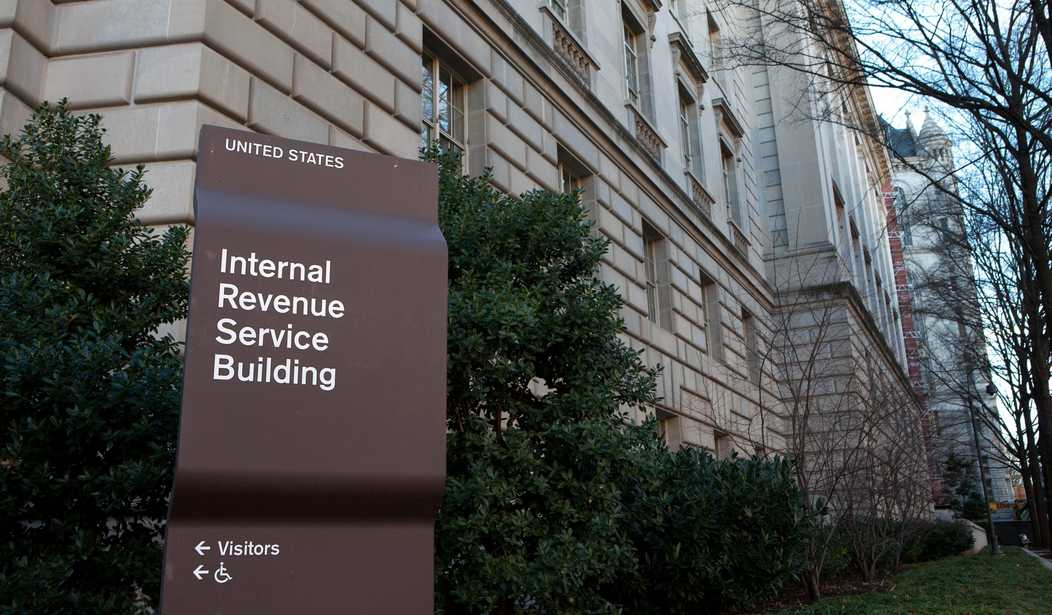A new inspector general report says the Internal Revenue Service erroneously paid out an estimated $15.6 billion in Earned Income Tax Credit payments in fiscal year 2015. For years, the IRS has underestimated the risk of fraud involved with its EITC tax credit program, resulting in $13 – $15 billion in improper payments annually.
Via the Washington Free Beacon:
A low-income worker can receive refundable tax credits from the Earned Income Tax Credit program when they meet certain requirements for income and age.
The $15.6 billion in improper payments identified by the inspector general represented 23.8 percent of total earned income credits paid out in that fiscal year. According to the Office of Management and Budget, an improper payment is a transfer that should not have been made, was made in the incorrect amount, or was made to an ineligible recipient.
The Office of Management and Budget has classified the Earned Income Tax Credit program a “high-risk” program, making it the only IRS program with this classification.
“The [Earned Income Tax Credit] remains the only revenue program fund to be considered a high risk for improper payments despite numerous indicators that other refundable tax credits (e.g. the Additional Child Tax Credit) also potentially result in significant improper payments,” the report states.
The inspector general found that the potential improper payment rate for the child tax credit program was 24.2 percent in fiscal year 2015, with improper payments totaling $5.7 billion.
Rampant fraud in the Additional Child Tax Credit program is indeed a chronic problem that the IRS has demonstrated an inability to fix.
In May of 2012, an Indianapolis News investigation found massive fraud within the ACTC program, “prompting a pledge from the IRS to reduce the waste.”
Via WTHR:
The Additional Child Tax Credit is a $1,000 refundable credit designed to help low-income individuals reduce their tax burden. The IRS says it is provided to qualifying individuals even if no income tax is withheld or paid, meaning the credit can exceed the tax liability. And unlike other tax credits which can only be claimed for children who are US citizens, ACTCs can be claimed for non-residents, including illegal immigrants, who live in the United States.
But the IRS has not been enforcing its own rules.
WTHR’s “Investigating the IRS” reports showed that the IRS has been paying billions of dollars in improper ACTCs, with much of it going to undocumented workers whose relatives – siblings, children, nieces and nephews – have never lived in the United States. IRS inspectors told WTHR they discovered some of the children listed on tax returns and ACTC filings did not actually exist, but they were instructed by IRS supervisors to approve the tax credits anyway.
The IRS came up with a strategy in 2012 designed to reduce the fraud that involved limiting the lifespan of Individual Taxpayer Identification Numbers (ITINs).
Similar to a social security number, ITINs are issued to people who are not U.S. citizens so they can file taxes and qualify for tax credits such as the ACTC.
IRS tax examiners told Eyewitness News the ITIN system was plagued with fraud and abused by millions of people who use fake documents to get ITINs and big tax refunds they’re not entitled to. The IRS insiders also said IRS administrators repeatedly instructed them to ignore the fraud – a finding later confirmed by the Inspector General.
The IRS’ plan required non-residents to re-apply and renew their ITINs every five years, but it was scrapped after about a year and the amount of fraudulent payments predictably increased to $6 billion to $7 billion in 2014. One wonders how much fraud a government program has to withstand before it is considered “high risk.”
In response to the latest IG report about the EITC tax credit program, an IRS spokesperson said they were “taking steps” to reduce errors.
“We continue to use every tax administration tool and technique available to us as well as vigorously explore additional data sources and partners to verify claim eligibility, deter over claims, and reduce payment errors,” the spokesperson said. “The IRS began taking steps in late fiscal year 2015 to improve the risk assessment process for the refundable tax credits. As part of that effort, we are continuing to evaluate the risk assessments and identify opportunities to make them more robust.”









Join the conversation as a VIP Member